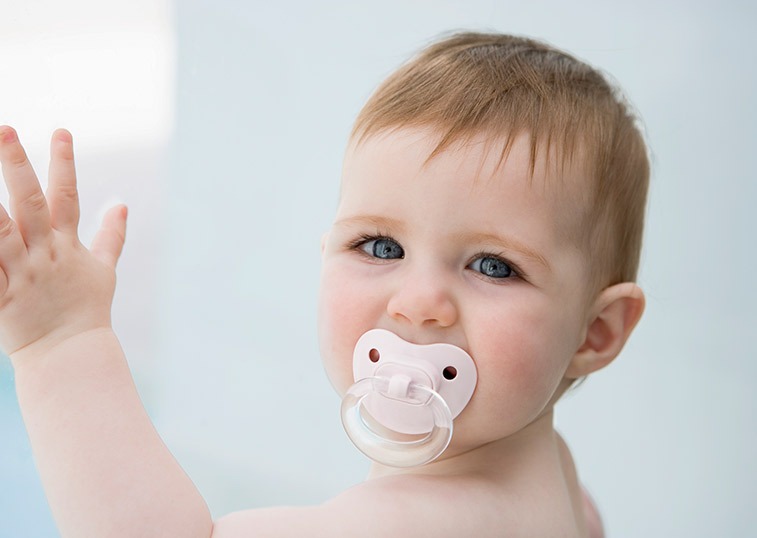They can be a lifesaver and a great way to soothe a fussy baby. But walk into any store and the pacifier aisle can be a little overwhelming. Different styles, colors, brands and purposes can confuse any sleep-deprived new parent. But a few simple rules and tips can help you get the right pacifier and keep your baby happy and safe.
Types of pacifiers
There are essentially only two types of pacifiers: orthodontic and non-orthodontic. An orthodontic design is meant to imitate a mother’s nipple and to accommodate how a baby eats. These are typically flatter and more square-shaped. Non-orthodontics pacifiers are more traditional and have a uniform bulb tip.
Most of these pacifiers are made either with latex, silicon rubber or soft plastic. Silicon choices are often preferred because the material is smoother and harbors fewer germs. When selecting a pacifier try to pick ones that are only one piece and have sealed rather than open bases. Also avoid ones with built-in gadgets, moving parts or liquid interiors.
Simple rules
To keep your baby safe there are few simple rules to follow when using a pacifier:
- Never hang a pacifier around a baby’s neck.
- Do not dip it in sugar, honey, corn syrup or other sugary materials.
- Clean it regularly. Boiling is recommended for pacifiers that are used by a child younger than 6 months, and using an automatic dishwasher will be fine for older children.
- Replace if it becomes damaged, the plastic begins to crack or the surface breaks down.
A pacifier is a great tool for parents to help their children, but as your toddler gets a little older, it can affect their teeth and possibly their teeth. You will want to speak with your pediatrician about how and when to wean your baby off the pacifier.
…
Posted In Children's, Health Information
